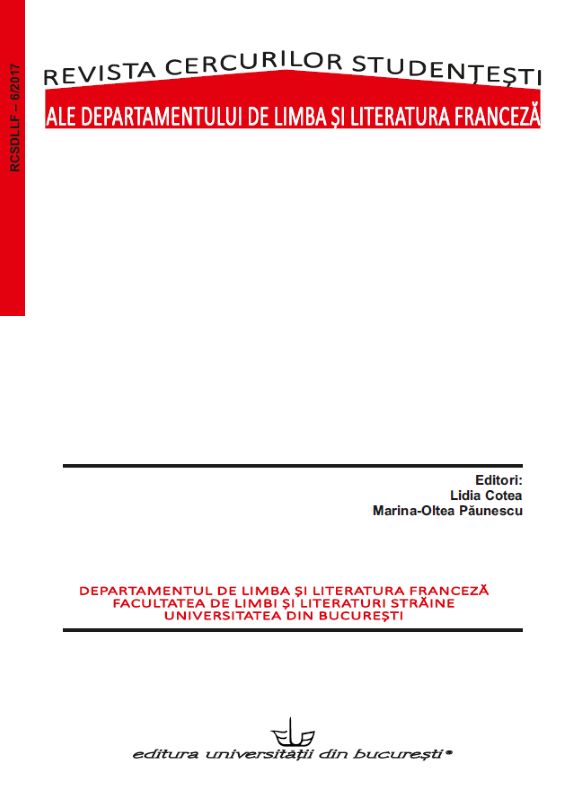
We kindly inform you that, as long as the subject affiliation of our 300.000+ articles is in progress, you might get unsufficient or no results on your third level or second level search. In this case, please broaden your search criteria.







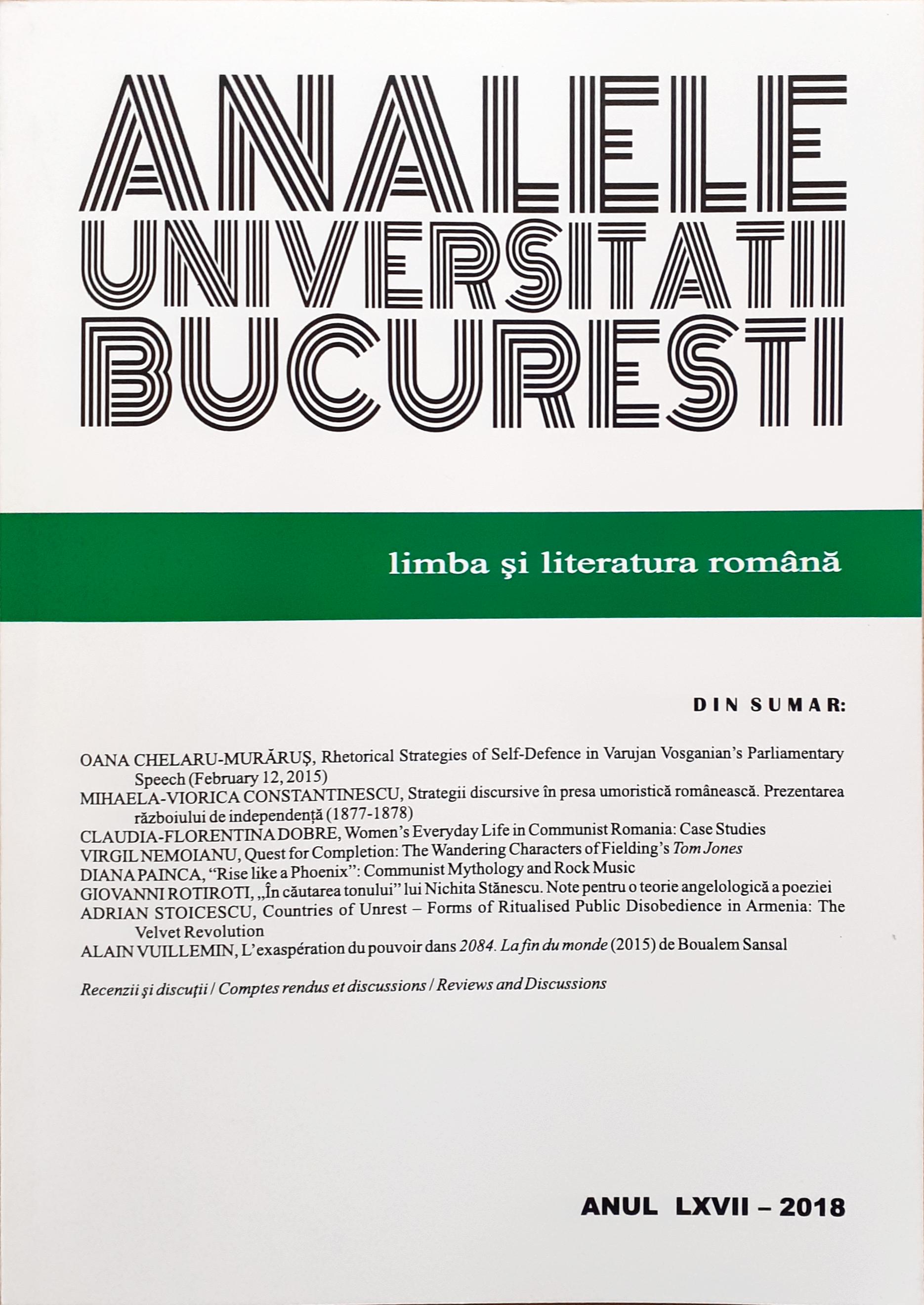
Boualem Sansal’s 2084. The end of the world is a political anticipation published in France, in French, in 2015. This novel is very dark. It is a dystopia, a fictional fiction that describes a "cacotopia", one of the worst imaginary worlds that can occur. The action is projected in the distant future, after 2084, "a founding date [...] even if no one knew what it was", the narrator comments. The "end of the world" has taken place. A Great Holy War, "called the Char", has wiped out the old countries of the North, the United States and Europe. The southern countries are no longer a single entity, Abistan, the country of Abi, its prophet and its founder. It is a theocratic dictatorship pushed to the extreme. In this "country of believers", any form of freedom has disappeared. Total submission to a single god, called Yölah, is required from everyone. One day, an ordinary citizen, Ati, suddenly becomes aware of the state of "blindness" where he was. His lucidity is awaken. He seeks to understand how the "sublime order" of this highly authoritarian theocracy operates, based on the exasperation of a pure, deified power, and built on an original lie, on a radical fraud.
More...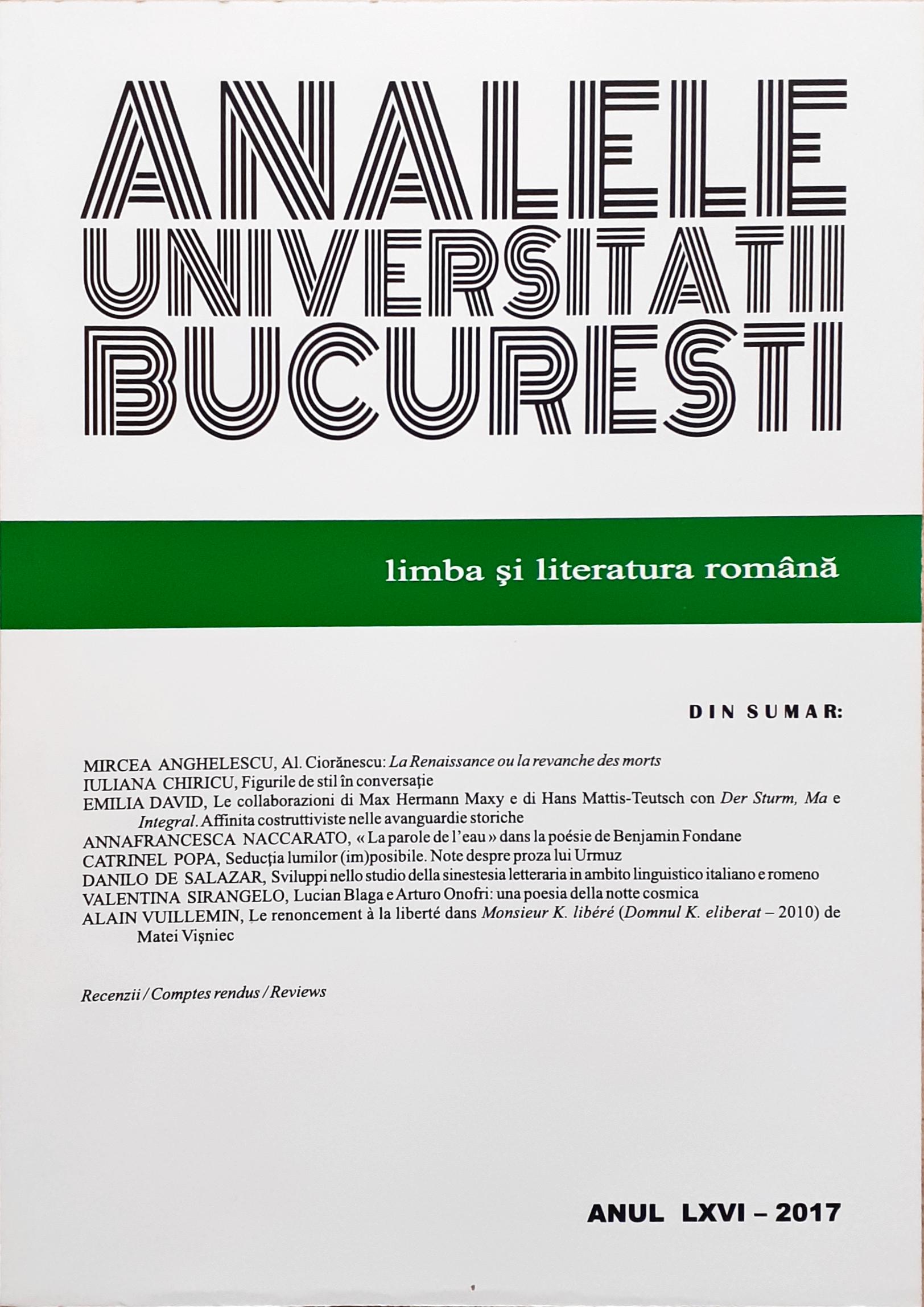
Al. Ciorănescu wrote his work on the Renaissance during a very long period of his studies and holidays in France using material he had read while preparing his thesis on L’Arioste en France, published in 1939, and while putting together the first part of the famous Bibliographie de la littérature française. Most likely unhappy with its mostly documentary character, he abandoned this work as a typewritten manuscript, with very few handwritten corrections, bound in two volumes with continuing page numbers. The fragment I have chosen contains the the first half of introduction to this work and part of chapter VI, devoted to the five „furors” that Ciorănescu identifies in Renaissance authors: the four generally recognized („la poétique, la mystique, la prophétique et l’amoureuse”), to which Pontus de Thyard adds a fifth, by „direct contact with divinity”.
More...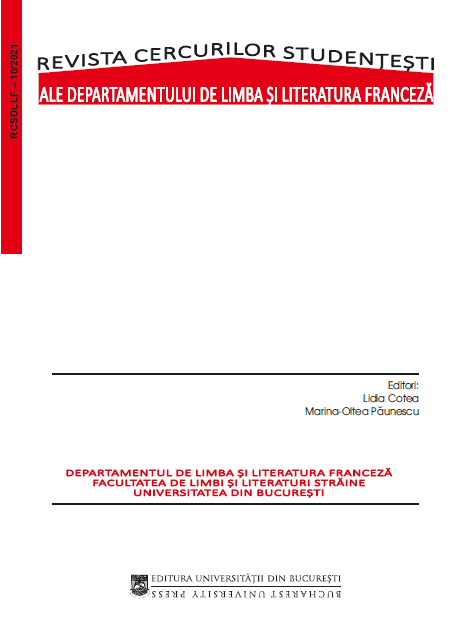
The aim of this article is to consider the perfect complementarity and the heterogeneous structure of two of Elie Wiesel’s works, which formulate a constant questioning on the fault of the uprooted man: "L’Oublié", published by Éditions du Seuil in 1989 and "Un désir fou de danser", a novel published by the same editions in 2006. In this works, the Romanian author Elie Wiesel gives his voice to characters constantly persecuted by demons from their past. Hyper lucid and attentive to the noise of his time, Wiesel celebrates, in his novels, a present loaded with memories so as not to abdicate before the sore Jewish memory that seems to haunt him. Madness, freedom, Judaic mysticism, an intimate understanding of Kabbalah, the memory of suffering are all themes that nourish Élie Wiesel and testify to his almost exclusive interest in the open wounds of Jewish history.
More...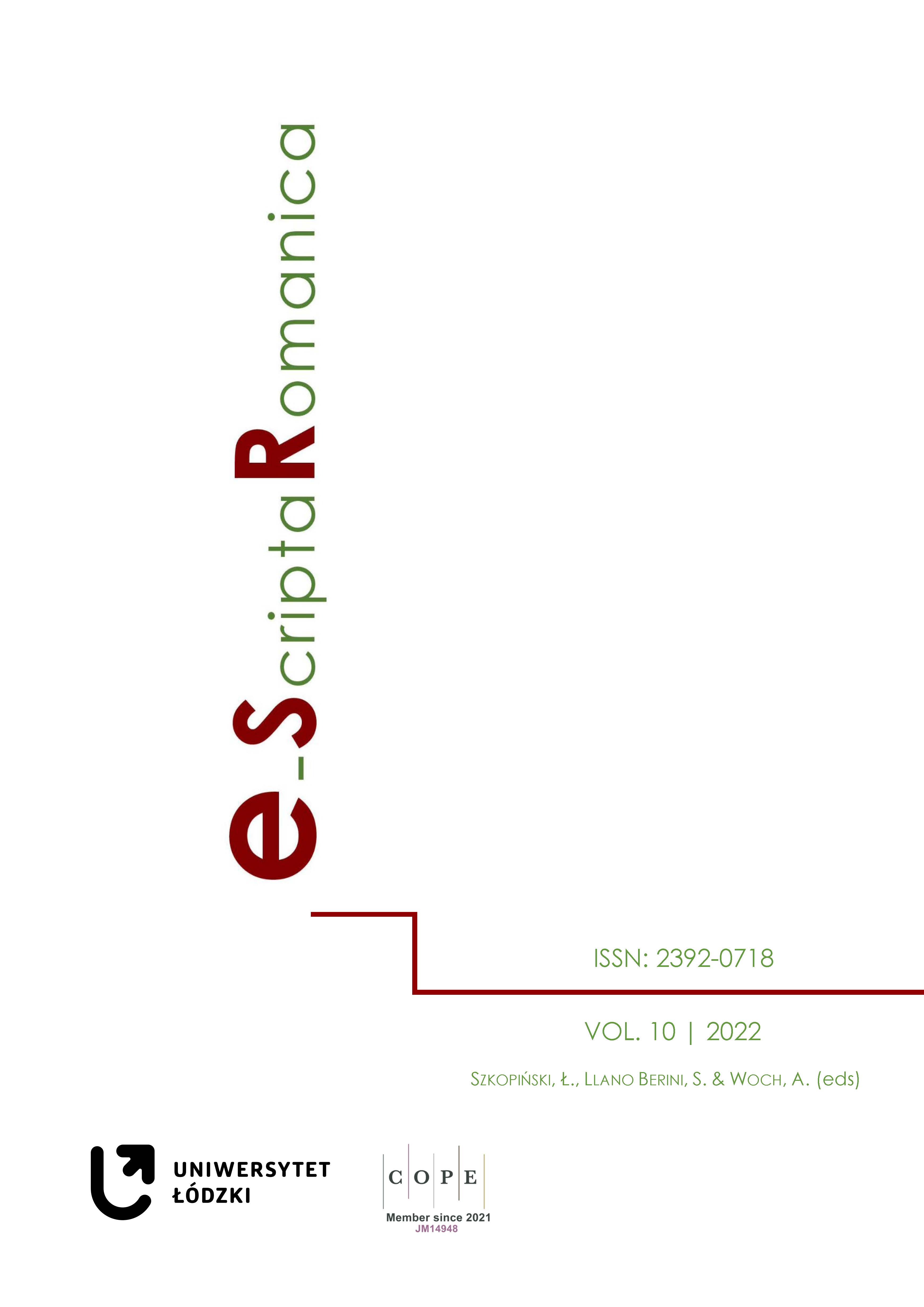
In Crommelynck's Le Cocu magnifique, the night is not merely an external detail as for many pieces whose most important actions are set in a nocturnal setting. Paradoxically, this work, which takes place mainly in daytime settings, gives the night an unexpected importance. We must therefore question the dramatic and aesthetic stakes of this omnipresence. The carnival festival of Saint-Géraud and the strange serenade given by Bruno in disguise to his wife Stella arouse both laughter and concern. But above all, the night invests the speech of the characters and inspires their actions. In addition, sleep, dreams, desire, fantasies, everything relates to the night. In addition, sleep and dreams are the subject of divergent interpretations by the characters. The question of absence and desire, feeding their fantasies, is at the heart of the relationships between the characters. As for Bruno, he feeds his jealousy by his exaltation of Stella's body, by poetry and by the imagination in which he delights to the point of sinking into madness: the night darkens the love relationship to the point of making the two protagonists pass from heaven to hell into a buffoon nightmare.
More...
The novels of Marcel Proust and Georges Perec present kitsch under the states of principles and modes according to the theoretical grid developed by Abraham Moles. This study therefore drew conceptual resources from the Psychologie du kitsch ou l’art du bonheur in order to analyze Un amour de Swann et Les choses. If to challenge social reality still implies being inspired by it, these works do not fail to plunge into the realities of the 19th and 20th centuries. However, at the threshold of the plots, the study has focused on the object in its acquisition, its use, its positioning, its contemplation, its manipulation. Thus, the technical words formulated by Abraham Moles offered statements such as the principle of inadequacy and accumulation as well as hedonistic, surrealist modes that revealed their literality. The kitsch offers a set of linguistic tools which explain phenomena observable at the social and literary level. As such, the object becomes the prism by which mentalities are defined. The novels of Marcel Proust and George Perec contain observations and sociological information rendered in aesthetic forms through the trial of snobbery.
More...
The novel Demain les chats (2016) by French writer Bernard Werber favors an analysis of the animal perspective in the narrative. Understanding the way the feline protagonists as well as the relationship between animals and humans are presented can allow conclusions about a potential world of the future in which humanity has failed during the transition between the Anthropocene and the apocalypse. Thus, the animals become both the victims of the catastrophe and the new dominant group. First, the context of the argument needs to be established by providing the fundamental information on the author, his works and the novel in question, including the feline protagonists. In the subsequent stage, the analysis will shift to the manner in which the characters of cats are depicted, examined by the means of a classification focused on the relationship between animals and humans. It leads to the observation of the hybrid nature of the characters and the perspective adopted by the author to describe them. Finally, the analysis results in the examination of the world perceived by the animals, a dystopian reality where the apocalypse marks the end of the Anthropocene and the change in the existing balance of power.
More...
Ironic detective is a relatively new genre in literature. Its development dates back to the middle of the twentieth century and continues up to the present days. The final crystallization of the genre is taking place in our time. The works of Polish author Joanna Chmielewska became one of the first examples of ironic detective stories. However, the French literature of the twentieth century also has notable representatives of the genre. The present article examines the peculiarities of the irony functioning in the detective genre, in the context of the work of the popular modern French writer Daniel Pennac. We distinguish irony as a means of comic and as a principle of work organization, which is inherent in the genre of ironic detective. Consideration of the ironic detective is impossible without a brief analysis of the detective development stages as a whole, therefore, the article also deals with the genesis of the detective genre from the classic to the French novel-noir. The emphasis will rest on the peculiarities of the ironic detective’s development. Using D. Pennac’s novel The Scapegoat as an example (the French edition is called Au bonheur des ogres, originally published in 1985), the features of the genre, alongside their manifestations at the content and formal level are illustrated. The article focuses on the fact that naturalistic details, scenes of cruelty, evil and chaos, caused by the consequences of the Second World War, are weakened due to ironic characteristics, stereotypes, as well as the very attitudes of the author and the narrator towards the surrounding world. The research proves that the analysed genre is an artistic form of a panoramic view of the society of the 80s with its false ideals and its consumerism.
More...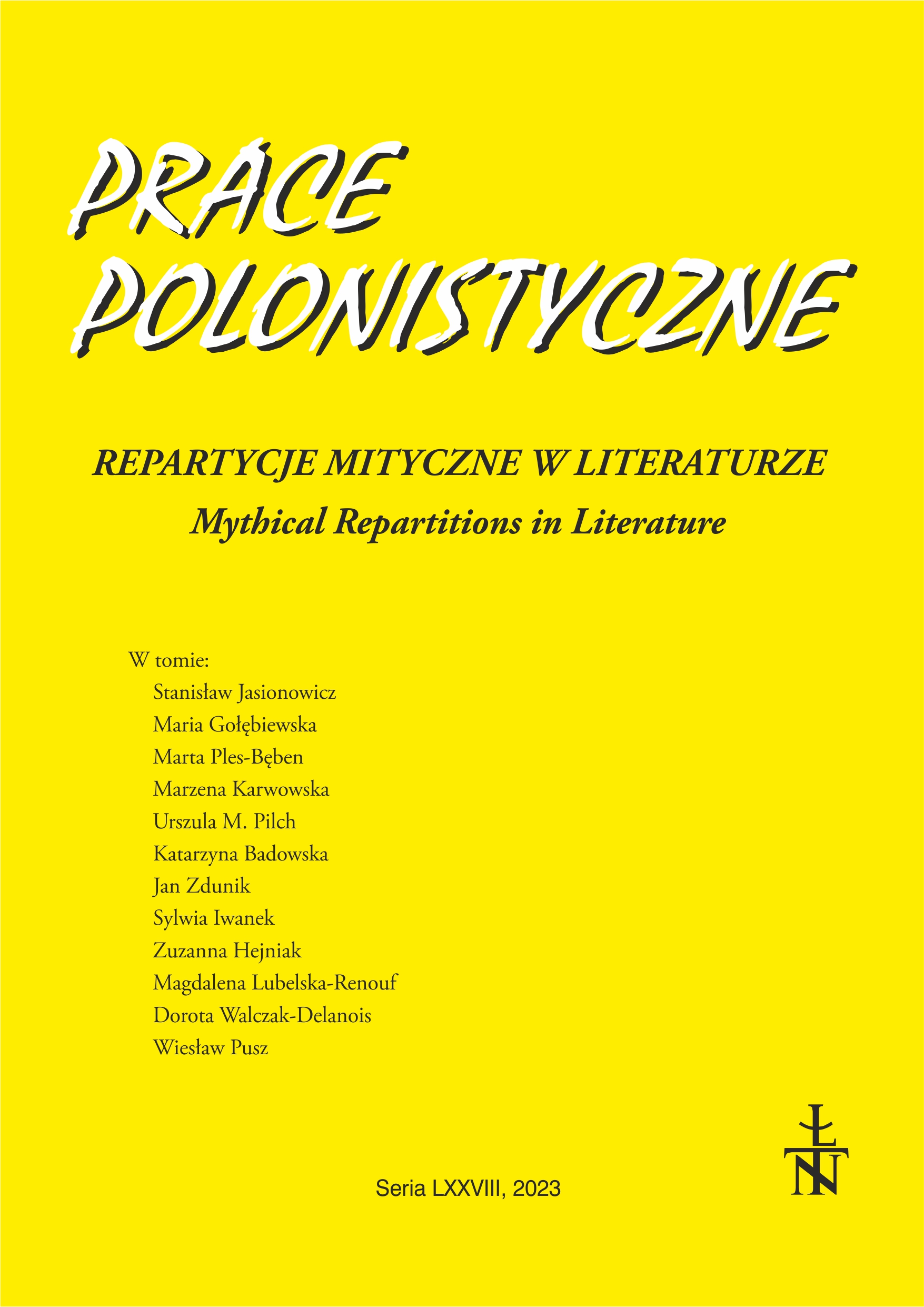
Gaston Bachelard’s last book (or, rather, notes from 1961–1962, edited and published by Suzanne Bachelard, more than twenty years after they were written) presents analyses of three mythical figures: Prometheus, Phoenix, and Empedocles. The Promethean myth and the myth of Empedocles’s death were earlier addressed in Bachelard’s previous works. In Fragments d’une poétique du feu, he extends and supplements his earlier analyses.The article examines the interpretations of selected myths in Fragments... in the context of the evolution of Bachelard’s philosophy and his key inspirations. It also addresses the following questions:1) what is myth in Bachelard’s late work?2) which of his main inspirations (psychoanalysis, analytical psychology, phenomenology) are still strongly visible in his late research?
More...
Gaston Bachelard (1884–1962), a French anthropologist of the imagination, seems to be somewhat forgotten and significantly underresearched in Polish literary studies, even though his major works on poetic imagination – La Psychanalyse du feu (1938), L’Eau et les rêves (1942), L’Air et les songes (1943), La Terre et les rêveries de la volonté (1947), La Terre et les rêveries du repos (1948), La Poétique de l’espace (1957), La Poétique de la rêverie (1960), and La Flamme d’une chandelle (1961) – have exerted a major impact on the perception of the literary text. Not only did Bachelard propose a new poetics (the poetics of the elements), but he also redefined the category of the author and introduced the following concepts to the humanities: the Dreaming Cogito (or the Dreamer’s Cogito), which describes a creative subjectivity, and dreamy consciousness (Fr. conscience rêveuse), or, in other words, poetic imagination. Bachelard’s poetics of the elements is founded upon his notion of symbols-images, which include principal images (Fr. imago princeps), imaginative compounds that organize the Dreamer’s Cogito.The article discusses the theoretical concepts that Bachelard explains in his monograph ontheEarthelement,entitledLaTerreetlesrêveriesdelavolonté.Essaissurlesimaginationdela matière (Corti, Paris 1947). Karwowska focuses on the reinterpretation of the mythical figure of Atlas. It is examined in the context of the imaginary relationship between anthropos and kosmos, which serves as the thematic core of Bachelard’s anthropology. Following Bachelard, Karwowska interprets the mythical Atlas as an archetypal image that can be expressed on the level of langage. What serves as its main feature is redundancy which remains open to various interpretative contexts. Bachelard’s work on myth in literary studies was most fully developed by myth-criticism. Scholars who research this field, similarly to Bachelard, investigate the human mundus imaginalis. They look for semantic basins (imaginary chreods), formed around a common meaning, the dominant myth. The article attempts to reconstruct the images generated by the Dreamer’s Cogito, which are the imagination’s response to the human encounter with material nature. It examines the mythical figure of Atlas against the wide spectrum of Bachelard’s figures of the imagination (the Antaeus complex, the Pluto-Proserpine complex, the mythical figure of Vulcan, the muscular anthropos, crystal imagination). Bachelard thoroughly investigates how humans use their imagination to colonize nature, studies the mechanisms of imagination that function on the level of the relationship between anthropos and kosmos, and finds universal anthropological antagonistic strategies of fight and domination in the human relationship with matter.
More...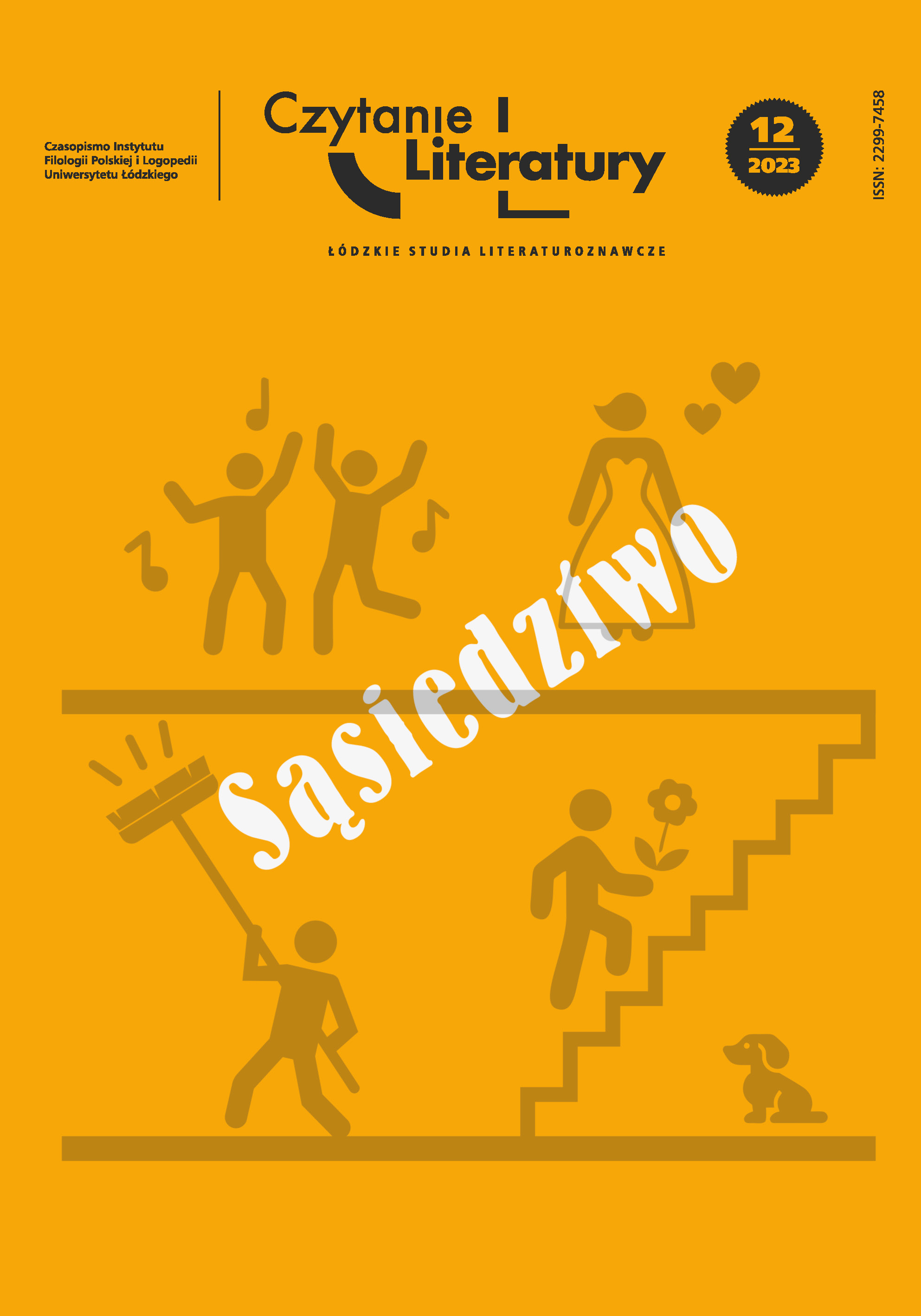
Otherness, alienation, the requirement to establish a neighbourly relationship with everything that is not mine – these are the main themes of Michel Houellebecq’s novel. The main character invented by the French writer is a nihilist who cannotrelate to anything, not even to himself, and every contact with otherness arouseshis fear, opposition and aggression. The unpleasant and unbearable proximity ofothers, however, allows him to define himself: in Submission he defines himself inopposition to the Muslim tradition, in Serotonin he despises the Dutch and his ownAsian fiancée, in Aneantir he fights as a carnivore over the ingredients in the householdfridge. His environs intensify his sense of loneliness, and observing othercultures, nations, traditions and habits leads to one bitter reflection – I don’t belonganywhere, therefore I am completely alone. What kind of neighbour can a total misanthropebe? And why did Houellebecq, in an age of openness, tolerance, praise of beauty and self-perfection, choose this particular kind of self-creation?
More...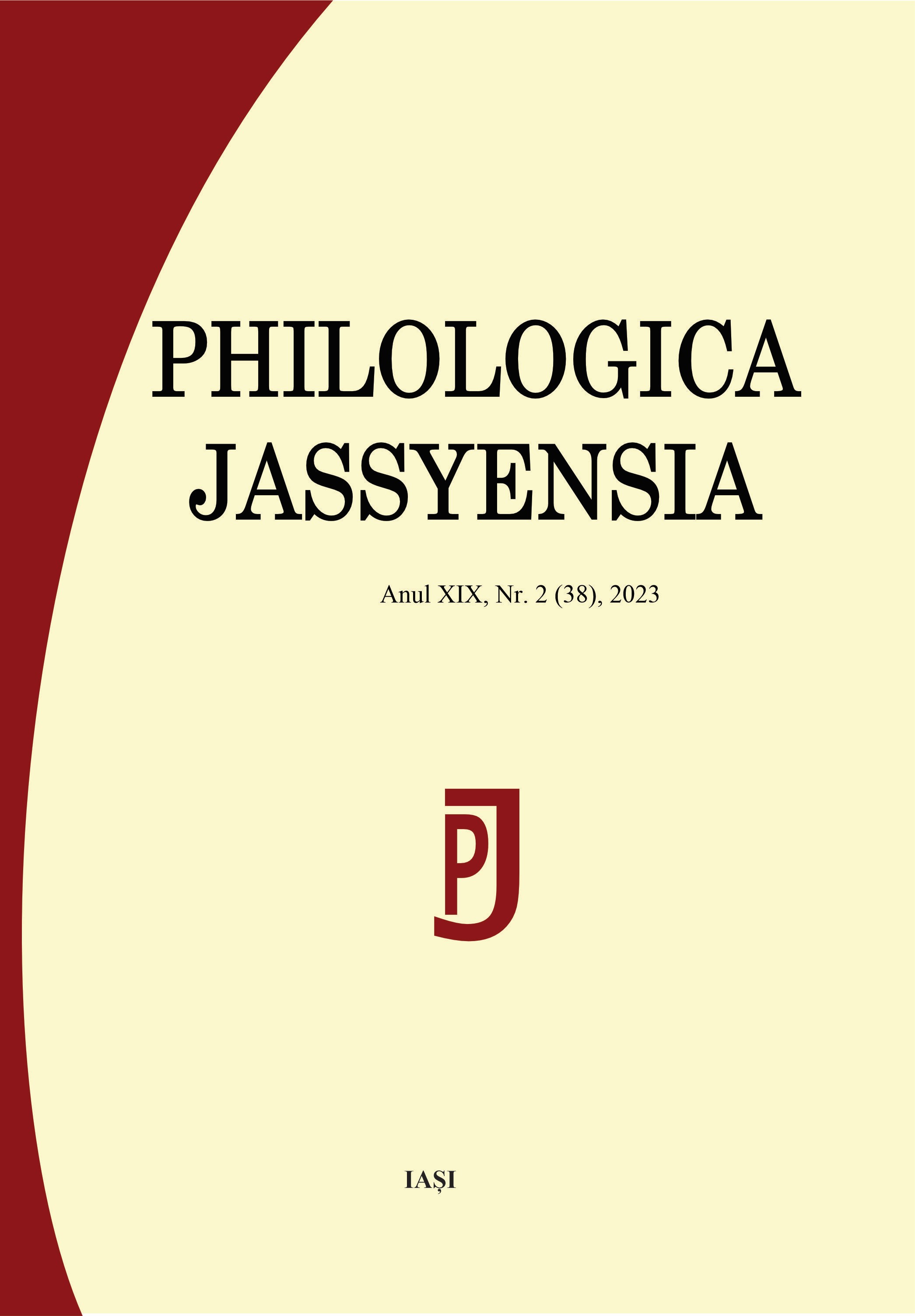
Flaubert’s vocabulary contains many rare words. The history and possible geography of some of them did not interest the specialists too much. This article examines the noun quiques in the sense of “toilets”. Although used a dozen times by the novelist in his travel diaries and correspondence, it is not well known in lexicography. Only two Norman lexicons from the late nineteenth and early twentieth centuries record it alongside quiqueron in the sense of “person who collects excrement”, a word classified by Wartburg in his article kik-. If the connection is not illusory, quiques can be linked to the onomatopeic etymon kik-, while emphasising that its area of distribution is restricted.
More...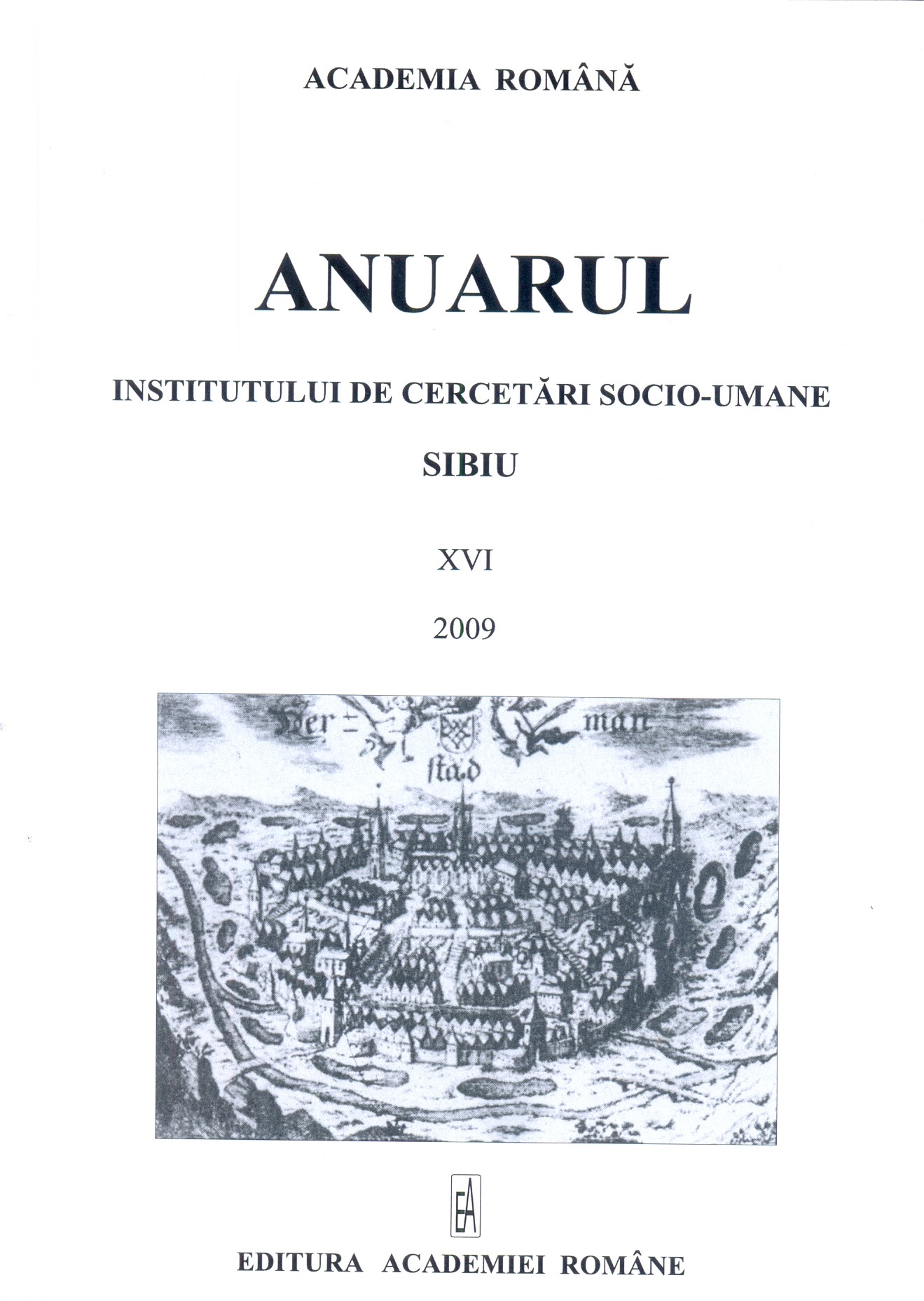
Ne propunem să analizăm nuvela lui Mérimée din perspectiva a trei concepte cheie în abordarea textului fantastic: ambiguitatea, ezitarea şi echivocul. Pornind de la observaţiile pertinente ale teoreticienilor de marcă în domeniu, analizăm modul în care cele trei concepte se susţin reciproc şi realizează împreună efectul fantastic remarcabil al nuvelei în cauză. O atenţie specială acordăm analizei efectului final în care autorul se dovedeşte un maestru.
More...
Polish translation of a fragment of Elsa Dorlin's book Se défendre. La philosophie du violence, Editions La Découverte, Paris 2019, pp. 150-181, which is an analysis of the computer game Hey baby! by Suyin Looui and Helen Zahavi's novel The Lousy Weekend. At the center of Dorlin's interest is the idea and practice of self-defense as a technique of establishing subjectivity. In the presented fragment, he reflects on the consequences of the visibility and invisibility of violence.
More...